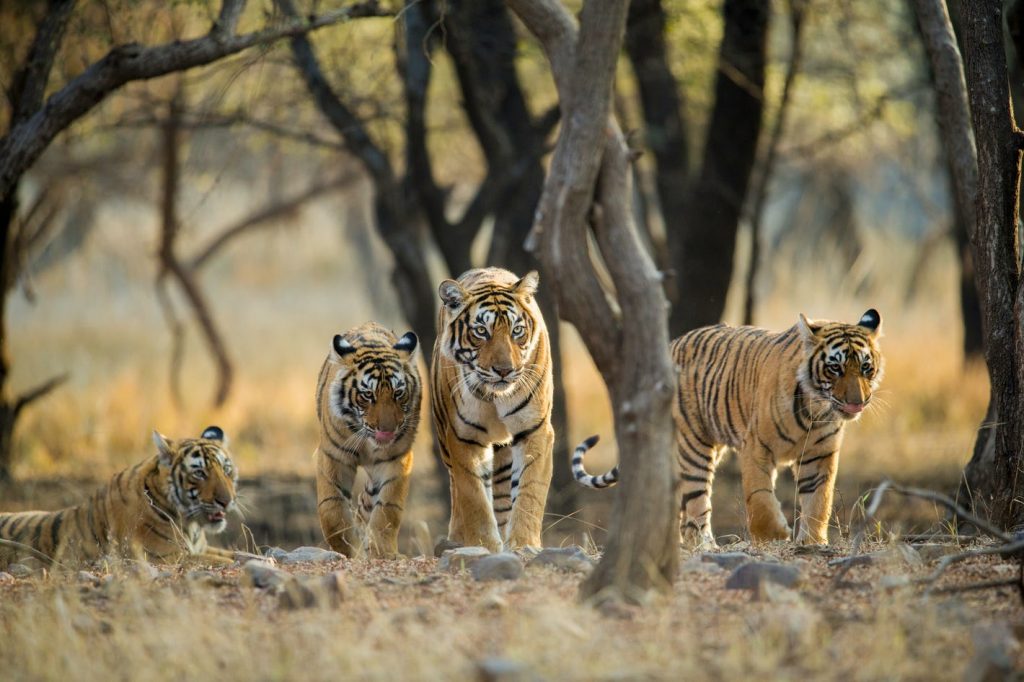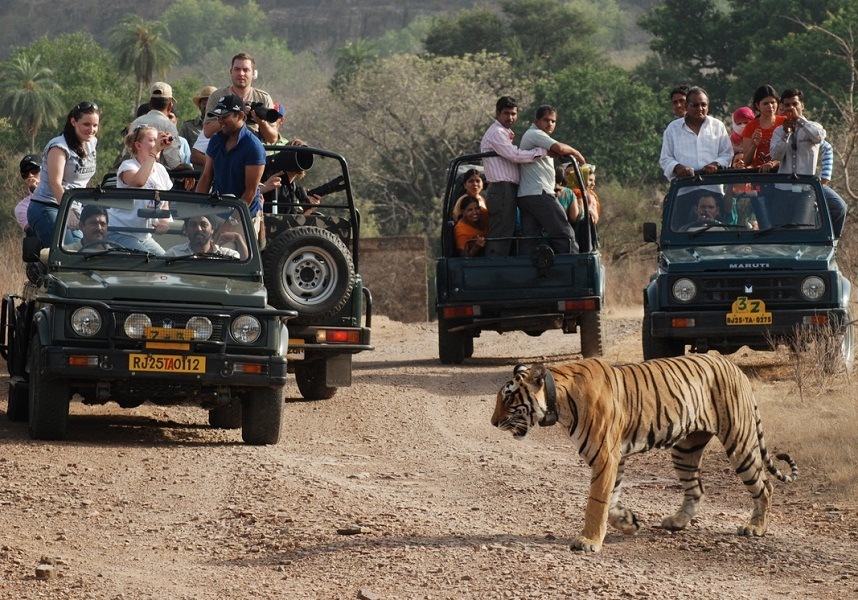RANTHAMBORE NATIONAL PARK
The Tiger Reserve
Tucked away between the Aravalis and the Vindhyan hill systems in the Sawai Madhopur district of eastern Rajasthan, Ranthambhore National Park (282 sq km) is a part of the much larger Ranthambhore Tiger Reserve (1334 sq km).
The reserve is home to over 40 species of mammals, 300 species of birds, 45 species of reptiles and over 300 species of plants. However it is the “relatively easy sightings” of wild tigers that has made Ranthambhore famous all over the world.
The Ranthambhore National Park, which is a part of the much larger Ranthambore tiger reserve, a Project tiger reserve, lies in the Sawai Madhopur district of eastern Rajasthan. It is the only forest reserve in Rajasthan state and in the entire Aravali hill ranges where wild bengal tigers still exist. The dry deciduous habitat of the reserve makes it much easier to find and observe tigers in their natural wild habitat.
The Chambal River forms a natural boundary of the Ranthambore national park towards the east, and on the eastern shore of Chambal lies the central Indian state of Madhya Pradesh. To the northeast of the Ranthambhore national park, flows the river - Banas, a tributary of Chambal. Across the river Banas, lies the Keladevi sanctuary, while the Sawai Man Singh wildlife sanctuary lies to the south of the Park. Both these sanctuaries, along with the Ranthambhore national park, are part of the Ranthambore tiger reserve.

Today, this Project tiger reserve spans over 1334 sq. km of area, of which 282 sq. km is the Ranthambore national park.
The entire Tiger Reserve stretches in a North-East to South-West direction for a distance of over 70 kilometers. To the extreme North-East lies the Kela Devi Sanctuary, south-west of which (and across the river Banas) lies the Ranthambore National Park. The Sawai Madhopur Sanctuary, followed by the Sawai Mansingh Sanctuary and the Qualji Closed Area lies further South-West of the park.
Ranthambhore is where the Aravali and the Vindhyan hill ranges meet and this confluence is perhaps the reason for the rich bio diversity of the Ranthambore. The geological formations of Vindhyan system are characterized by flat table tops locally known as 'Dang' , while the Aravallis are characterized by sharp ridges and conical hill tops. An important geological fault line - the Great Boundary Fault - lies at the confluence of the Aravali and the Vindhyan systems - and runs right across Ranthambore national park.

All the Tiger safaris in the Reserve are conducted inside the National park or in the contiguous Sawaimadhopur Sanctuary and Sawai Mansingh Sanctuary. The park is open to tourists during October-June, and receives more than 100,000 wildlife enthusiasts every year from all over the world.
Ranthambhore National Park is probably the best place in the world to see wild tigers and is the only dry deciduous tiger habitat in the world.
Regular visitors consider Ranthambore, as one of the best national parks in the world to see Bengal tigers, wild, in their natural habitat. But here you don't just see Bengal tigers you see Noor, Machali , Star male, Unnis and so on. Each of Ranthambore's denizens are well identified and The Ranthambhore Bagh, with its trained team, is perhaps your best bet to know who is who.
Being considered as one of the famous and former hunting grounds of the Maharajas of Jaipur, today the Ranthambore National Park terrain is a major wildlife tourist attraction spot that has pulled the attention of many wildlife photographers and lovers in this destination.
Ranthambhore was established as the Sawai Madhopur Game Sanctuary in 1955 by the Government of India and was declared one of the Project Tiger Reserves in 1973. Ranthambore became a national park in 1980.
Jungle Safari
Mode Of Transport
a) Gypsy [Open 4 Wheel Drive Jeep] 6 Seater
b) Diesel Canter [Open Safari Bus] 20 Seater
c) Petrol Canter [Open Safari Bus] 12-15 Seater
Park Timings
The Park timings depend on the time of the sunrise and sunset. Generally speaking, the Park opens to the tourists half an hour after sunrise and closes half an hour before sunset.


For most part of the year it would be safe to say that the timings are as follows:
Summer: Morning April to June 0630 hr to 1030 hr Evening 1530 hr to 1830 hr
Winter: October to March Morning 0700 hr to 1100 hr Evening 1500 hr to 1800 hr
• Timings may vary or change


